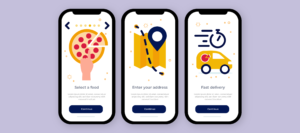Confused between React native vs Flutter for your next project? But you have to finalise one. We can help you to get out of this confusion. Let’s have a detailed look and one short easy video (for non technical people).
Mobile app development for different platforms has been a challenging task since forever. The necessity of developing different versions of the same app for multiple platforms creates many problems. Even though the native apps are best in user experience and performance. But developing a native app is an uphill battle considering the fact that a mobile app development company has to invest double resources to build apps for each platform separately.
And as a result, no matter how minutely managed, some differences are always found in hybrid and native app development. This made way for the invention of cross-platform app development. There have been many cross-platform app development frameworks used in the past but in recent few years, two futuristic frameworks have revolutionized the app development industry.
To help you select the best framework for your app development, we will here compare the two best cross-platform mobile app development frameworks. One is Flutter by Google and second in React Native by Facebook. These frameworks have their own advantages over each other. In this article, we will compare these frameworks based on the below parameters.
- Development
- Programming language
- Architecture
- Performance
- Installation and Configuration
- User Interface (UX/UI)
- Community Support
- Testing
Along with the above-mentioned parameters, we will discuss:
- What is React Native?
- What is Flutter?
- Why use React Native?
- Why use Flutter?
- Difference Between React Native and Flutter
Let’s begin.

What is React Native?
React Native is an open-source toolkit powered by Facebook. This SDK has been there for quite a while now since its launch in the year 2015. React Native is a Javascript framework which makes it popular amongst the developers. The framework is built upon React library. React Native started as Facebook’s internal hackathon project which was released for the public later.
What is Flutter?
Flutter is an open-source software development kit (SDK) launched by Google in the year 2017. Flutter provides a simplified framework for the development of high-performance and fast application. The application created using Flutter can run smoothly and effectively on both iOS and Android. Flutter uses a specific programming language called Dart, also created by Google.
Why use React Native?
The first and foremost advantage of React Native is that it uses JavaScript. JavaScript is the most popular language that is easy to learn and implement. Majority of the developers prefer JavaScript for app development. Another benefit of using React Native is that it saves your team from the hassle of building separate codebase for each platform.
Why use Flutter?
Flutter is an advanced toolkit created by Google. Flutter allows you to create native apps for both Android and iOS using a single codebase. Flutter is simpler than React Native in the ways it compiles with native components. Flutter uses Dart language and lets it compile the source code ahead-of-time to native code without the need of any bridge. Flutter is designed to offer amazing performance owing to its range of 60 fps to 120 fps.
Difference Between React Native and Flutter
React Native and Flutter are near competitors and the app development industry is divided between these two choices for the app development process. Both the frameworks are amazing but nothing is absolutely perfect. We are going to have deep study of react native vs flutter on the steps involved in the app development process.
 React Native React Native |
 Flutter Flutter |
|
| Launch | Jan 2015 | May 2017 |
| Launched By | ||
| Popular Apps | Walmart, Facebook, LinkedIn, Instagram | Google Adwords, Alibaba, Groupon, Ebay |
| Development | Use of third-party libraries, Communicates with native elements through bridge | Fully-customizable widgets |
| Programming Language | JavaScript | Dart |
| Architecture | Flux | Skia |
| Performance | Adaptable components | Majority of widgets are not adaptable |
| Installation and configuration | Create-react-native-app package, complicated configuration | Flutter package, Straightforward configuration |
| User Interface | Fragile | Expressive and flexible |
| Github Stars | 68,690 | 37,200 |
| Documentation | Unclear and non-elaborative | Very clear and easy to understand |
Development
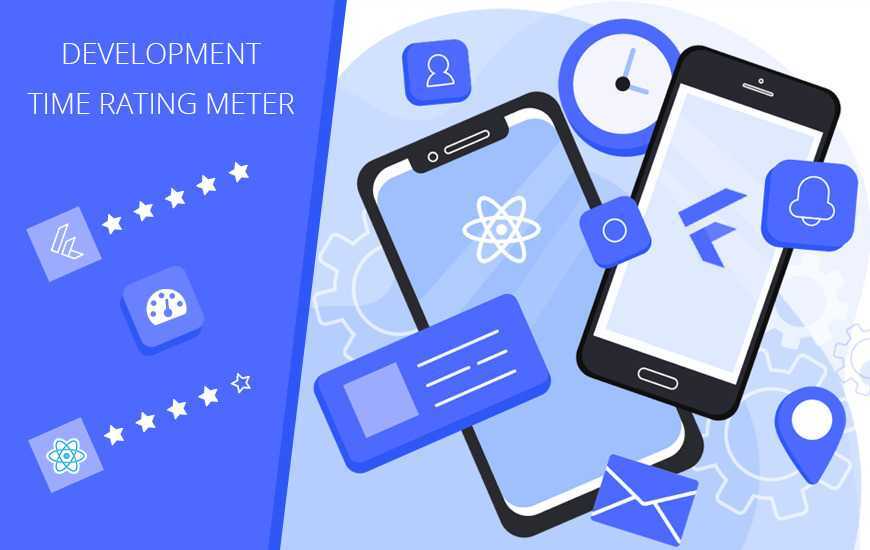
The time and efforts invested in development and the end results are the most important factors for an app development company and the app owners while selecting one framework between react native vs flutter. How easy or difficult the development is going to be with each toolkit will help us identify which framework yields greater ROI.
 React Native React Native |
 Flutter Flutter |
|
|
|
|
|
|
Comparison
Development – I think is the major factor while talking on the react native vs flutter. React Native is preferred by the majority of the developers as it is an oldie in the industry and has better support available. Additionally, JavaScript is a language that is widely used in app development and to start development with React Native, one doesn’t need to put extra efforts in learning.
However, Flutter app development is new in the industry and uses a completely different language “Dart”, also the art of using and experimenting with widgets does not come naturally. People have started giving Flutter a try and those who have tried building apps using Flutter appreciate the ease and quality of development.
Programming language
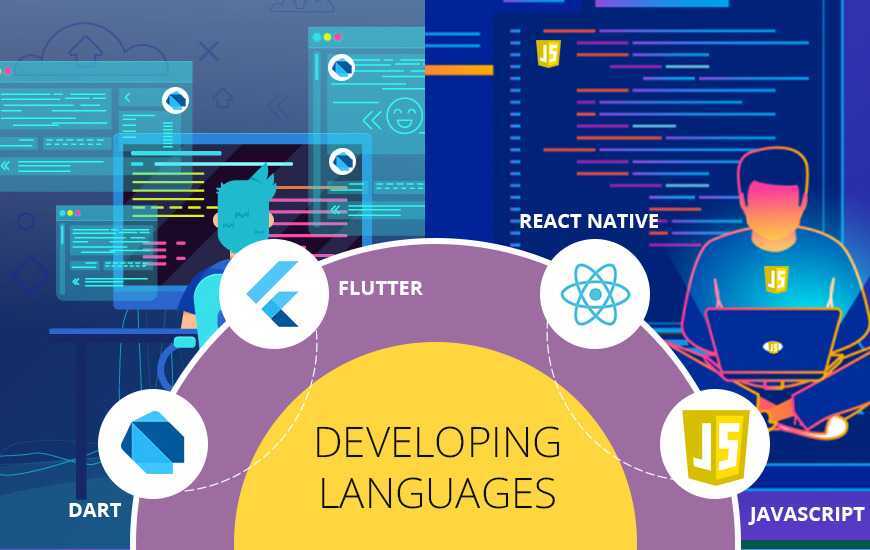
Both the frameworks for cross-platform app development require a single codebase for all the platforms. That being the biggest advantage allows developers to create hybrid apps that are compatible on iOS and Android both and provides a budget-friendly and time-efficient option for businesses.
 React Native React Native |
 Flutter Flutter |
|
|
|
|
|
|
|
|
Comparison
Although React Native is adopted by most developers because of JavaScript, even those who have basic knowledge of JavaScript or Java can start developing apps with Flutter. Dart has its own set of libraries and thus it has an edge over React Native.
Architecture
The technical architecture of a framework is as important as language and other features. A framework architecture helps a team in deciding the toolkit they would want to build their apps on.
 React Native React Native |
 Flutter Flutter |
|
|
|
|
|
|
Comparison
Flutter, with its package of components, improves the performance of the app and rendering speed. On the other hand, the need for bridge communication in React Native results in diminished performance.
Performance
Looking on the Flutter vs React Native performance comparison both toolkits have some benefits and some drawbacks.
 React Native React Native |
 Flutter Flutter |
|
|
|
|
|
|
Comparison
Considering the above-mentioned factors to determine React Native vs Flutter Performance, the latter is certainly better than the former in terms of performance.
Installation and Configuration
The installation and configuration of the framework must be an easy and self-explanatory process. So that developers can jump into app development without having to resolve the puzzle of installation and set up.
 React Native React Native |
 Flutter Flutter |
|
|
|
|
|
|
Comparison
Flutter installation and configuration is much simpler than React Native as it is less time consuming and less complicated.
User Interface (UX/UI)
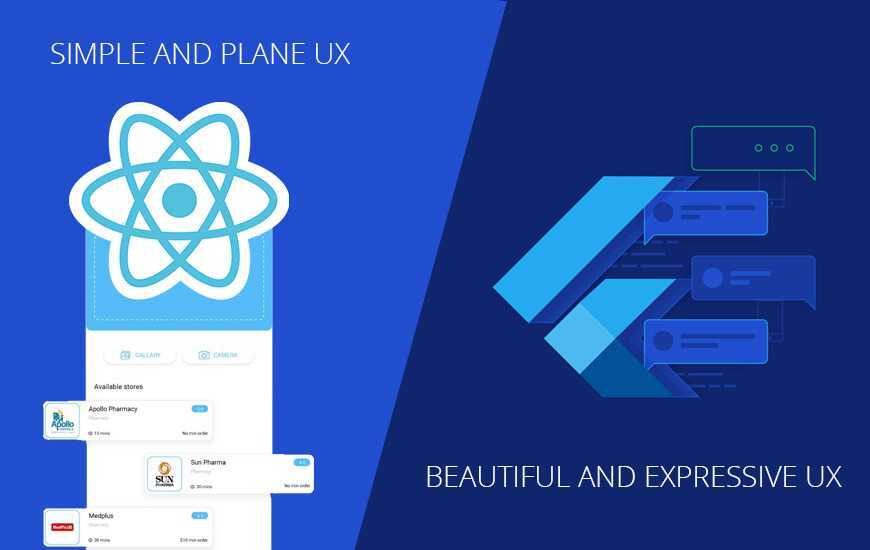
A great user interface drives more user engagement and is a must for an app’s success. While we compare the differences between React Native vs Flutter 2020, judging them based on UI/UX becomes important.
 React Native React Native |
 Flutter Flutter |
|
|
|
|
Comparison
React Native’s dependency on third-party libraries and the lack of UI components lead to a very fragile UI that is not very impactful. But with Flutter, you get an amazing interface which incorporates successful user-engagement.
Community Support
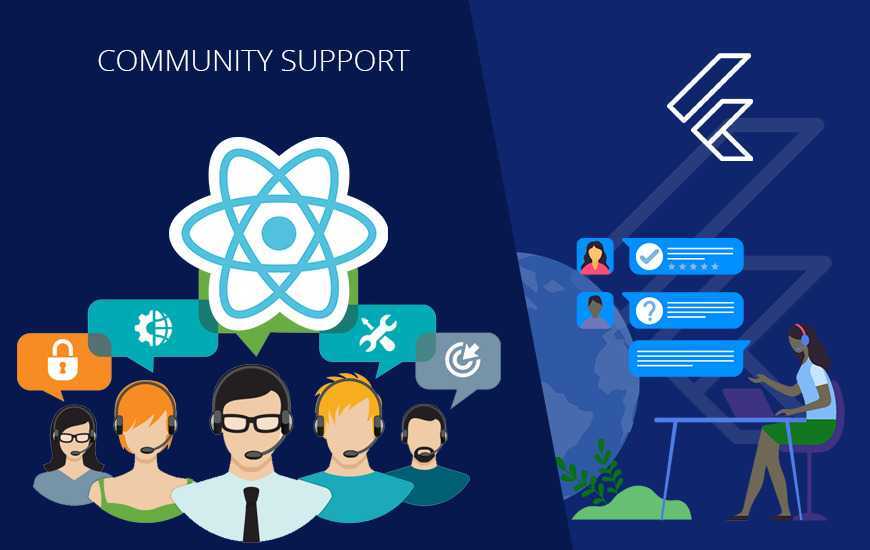
Any framework gains community support after being used by many of the developers. The community members help each other with development, helping each other to learn new things within the community. If a developer ever gets stuck during the process, he/she can always turn to the community for extended help.
 React Native React Native |
 Flutter Flutter |
|
|
|
|
Comparison
Even though Flutter’s community is increasing rapidly, React Native is still supported by a huge community and offers better support to the members of the community and new learners.
Testing
App testing is an important step in the process of app development. Testing an app determines its quality and is a great way of accumulating feedback to enhance the app for rich user experience.
 React Native React Native |
 Flutter Flutter |
|
|
|
|
Comparison
Clearly, Flutter is the winner in the context of testing. Although React Native has an edge over Flutter in terms of users and community support, the testing is still a difficult task for the developers.
Conclusion
React Native and Flutter both frameworks have their advantages and disadvantages over each other. React Native was launched some years before Flutter, thus, React Native is liked by most developers. React Native was the first cross-platform mobile app development framework that provided the opportunity to build native apps by using Javascript and React.js knowledge. All other frameworks before React Native failed to beat native apps.
Whereas Flutter has emerged as a solution to all the existing problems with React Native. But Flutter is still in its initial stage and not yet adopted by many developers. Flutter doesn’t have community support as huge as React Native. But in a few years, Flutter has become too popular and it is speculated that the time is not far away when Flutter would be dominating the app development industry.
The best way to find out the perfect toolkit and framework for your app is by considering your app’s requirements and end goals.
Contact Pairroxz to help you determine which framework is best for your app development? We have a team of experienced app developers who are skilled with latest technologies and frameworks.
<!–  –>
–>

[fblike]



